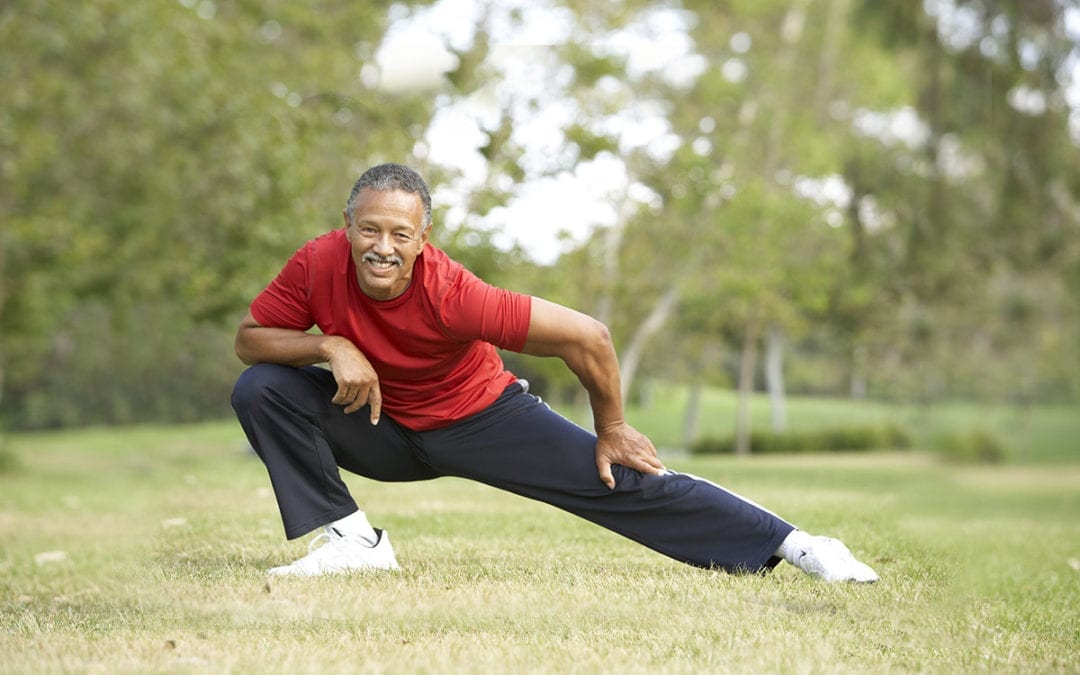As we grow older, our bodies face new challenges. For many seniors, orthopedic issues become a big part of daily life. Let’s explore some common problems that affect older adults’ bones and joints, and discover ways to maintain mobility and quality of life.
Key Takeaways
- Arthritis and osteoporosis are common orthopedic issues in seniors
- Fragility fractures pose a serious risk, especially in the hip, wrist, spine, and shoulder
- A multidisciplinary approach is crucial for effective orthopedic care in older adults
- Physical therapy and education play vital roles in maintaining independence
- Emerging treatments and personalized medicine offer hope for improved outcomes
Arthritis: The Joint Troublemaker
Imagine your joints as the hinges on a door. Now, picture those hinges getting rusty and creaky. That’s kind of what arthritis feels like. It’s super common – millions of people around the world deal with it every day. There are different types, but the two biggies are osteoarthritis and rheumatoid arthritis.
Osteoarthritis is like sandpaper slowly wearing down the smooth surfaces in your joints. It happens over time and can make simple things like tying your shoes pretty tough. Rheumatoid arthritis, on the other hand, is when your body’s defense system gets confused and attacks your joints. Both types can cause pain and make your joints stiff, like a rusty robot trying to move.
Treatment options for arthritis range from medication and physical therapy to lifestyle changes and, in severe cases, joint replacement surgery. Managing arthritis often involves a combination of approaches tailored to each individual’s needs.
If you’re dealing with knee pain from arthritis, you’re not alone. Lots of older folks find their knees giving them trouble. Our specialists can help you explore treatment options to reduce pain and improve mobility.
Osteoporosis: When Bones Become Brittle
Think of your bones like a tall building. Osteoporosis is like termites slowly eating away at the building’s structure. Your bones get weaker and more likely to break. It’s a sneaky condition because you can’t feel it happening until – oops! – you get a fracture from something that wouldn’t normally cause one, like a small bump or fall.
This is why doctors are always telling older adults to get enough calcium and vitamin D. It’s like giving that building extra support beams to keep it strong. Exercise, especially the kind where you’re on your feet, also helps keep bones tough.
Regular bone density scans are crucial for early detection and management of osteoporosis. These painless tests can help identify the condition before a fracture occurs, allowing for preventive measures to be put in place.
Osteoporosis can affect any bone, but hip pain is a common complaint when this condition strikes. Our team can assess your bone health and develop a comprehensive plan to strengthen your bones and reduce fracture risk.
Fragility Fractures: A Serious Concern
Remember how we talked about osteoporosis making bones brittle? Well, fragility fractures are what happen when those weakened bones break. It’s like dropping a ceramic plate versus a plastic one – the ceramic is much more likely to shatter. These fractures are a big deal, especially for older folks.
Here’s a sobering fact: about 9 million people worldwide get fragility fractures each year. Hip fractures are particularly nasty. They can really knock you off your feet – literally. Within a year of breaking a hip, somewhere between 14% to 36% of people don’t make it. That’s why it’s so important to prevent falls and keep those bones strong.
Preventing fragility fractures involves a multifaceted approach, including fall prevention strategies, bone-strengthening exercises, and medication when necessary. Regular check-ups with your orthopedic specialist can help identify and address risk factors before a fracture occurs.
Common Sites for Fragility Fractures
- Hip: 14-36% mortality rate within 1 year
- Wrist: 5-10% of all osteoporotic fractures
- Spine: Vertebral fractures affect 25% of postmenopausal women
- Shoulder: Proximal humerus fractures account for 5% of all osteoporotic fractures
Other Orthopedic Issues in Seniors
It’s not just bones and joints that can cause trouble as we age. Our muscles get in on the act too. There’s this thing called sarcopenia, which is a fancy way of saying “age-related muscle loss.” It’s like your muscles are slowly shrinking, making you feel weaker and less steady on your feet.
Then there’s frailty. This isn’t just about feeling weak – it’s a whole package deal that can include weight loss, feeling tired all the time, and moving slowly. It’s like your body’s battery is running low and takes longer to recharge.
Addressing these issues often involves a combination of resistance training, proper nutrition, and sometimes hormone therapy. Regular exercise, particularly strength training, can help combat muscle loss and improve overall physical function.
These issues can affect various parts of your body. For instance, shoulder pain or elbow pain might be more noticeable as muscles weaken. Our specialists can help diagnose the root cause of your pain and develop a tailored treatment plan.
Getting the Right Care
When it comes to dealing with these orthopedic issues, it’s not just about seeing one doctor. It’s more like assembling a superhero team to tackle the problem from all angles. This team might include doctors who specialize in bones and joints, physical therapists, nutritionists, and even mental health pros.
One of the first things this team might do is something called a comprehensive geriatric assessment. It’s like a full-body check-up that looks at not just your physical health, but also how you’re doing mentally and socially. This helps the team come up with a plan that’s just right for you.
This multidisciplinary approach ensures that all aspects of your health are considered, leading to more effective and personalized treatment plans. It’s not just about treating symptoms, but improving overall quality of life.
At OKC Orthopedics, we believe in this team approach to tackle orthopedic issues head-on. Our experienced specialists work together to provide comprehensive care tailored to your unique needs.
Staying Independent and Active
The main goal of treating orthopedic issues in older adults isn’t just about fixing bones or muscles. It’s about helping people stay independent and enjoy life. This means focusing on things like being able to move around easily, take care of yourself, and do the things you love.
Physical therapy plays a big role here. It’s like going to the gym, but with exercises specially designed to help you move better and stay strong. These exercises can help prevent falls, keep your balance sharp, and make everyday activities easier.
Occupational therapy is another valuable resource, helping seniors adapt their environment and daily routines to maintain independence. This might include learning new ways to perform tasks or using assistive devices to make activities easier and safer.
Our physical therapy services are designed to help you maintain your independence and quality of life. Our therapists work closely with you to develop a personalized plan that addresses your specific needs and goals.
Education is Key
Understanding your condition and how to manage it is super important. It’s like being given a map and compass when you’re lost in the woods. The more you know, the better equipped you are to handle challenges.
This education isn’t just for patients – it’s for family members and caregivers too. Knowing how to help a loved one with orthopedic issues can make a big difference in their quality of life.
We offer educational resources and workshops to help you and your family understand your condition, treatment options, and self-management strategies. This knowledge empowers you to take an active role in your health and make informed decisions about your care. Can we place
The Future of Orthopedic Care for Seniors
Science is always moving forward, and that’s true for orthopedic care too. Researchers are working hard to find new ways to treat and prevent these common issues. They’re looking at everything from new medicines to high-tech surgeries that are easier on the body.
One exciting area is personalized medicine. This is the idea that treatments can be tailored to fit each person’s unique needs, kind of like a custom-made suit. It takes into account things like your genes, lifestyle, and specific health issues to come up with the best plan for you.
Emerging technologies like 3D printing for custom joint replacements and regenerative medicine techniques offer promising avenues for more effective and less invasive treatments. These advancements could lead to faster recovery times and better outcomes for seniors with orthopedic issues.
Stay up to date with the latest advancements in orthopedic care by checking out our blog. We regularly share information about new treatments and technologies that could benefit our patients.
Wrapping It Up
Dealing with orthopedic issues as we age can be tough, but it’s not all doom and gloom. With the right care, knowledge, and attitude, many older adults can stay active and independent. Remember, it’s not about turning back the clock, it’s about making the most of every tick.
If you’re facing orthopedic challenges, don’t go it alone. Reach out to healthcare professionals who can guide you through your options. For more information on managing arthritis, osteoporosis, and other conditions, check out this comprehensive arthritis guide. It offers in-depth advice on symptoms, treatments, and lifestyle changes that can help you maintain mobility and reduce pain.
And hey, keep moving! Even small amounts of activity can make a big difference in keeping those bones and joints happy.
Remember, growing older is a privilege, and with the right support, you can make those golden years truly shine. Stay informed, stay active, and most importantly, stay you!
If you’re experiencing back pain, foot and ankle pain, or any other orthopedic concerns, don’t hesitate to contact us for a consultation. Our team is here to help you maintain your mobility and enjoy life to the fullest.



